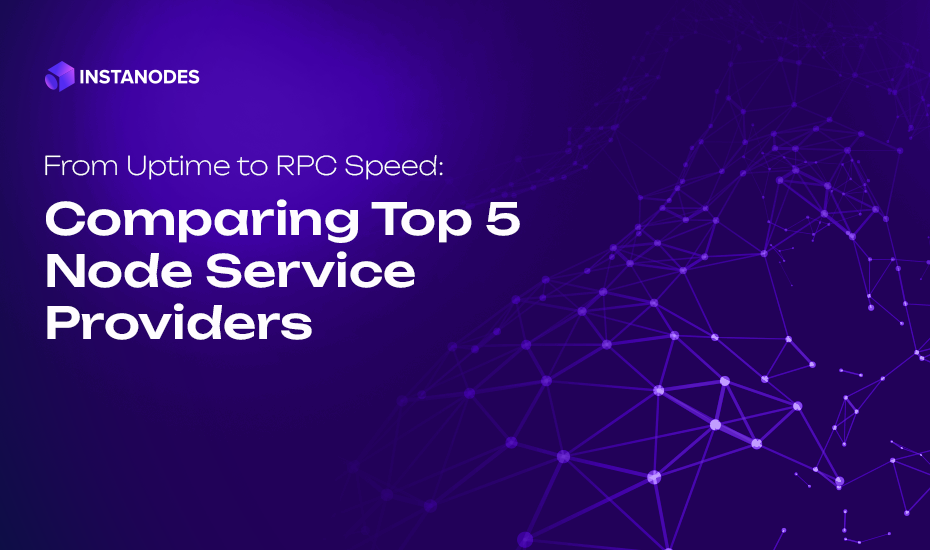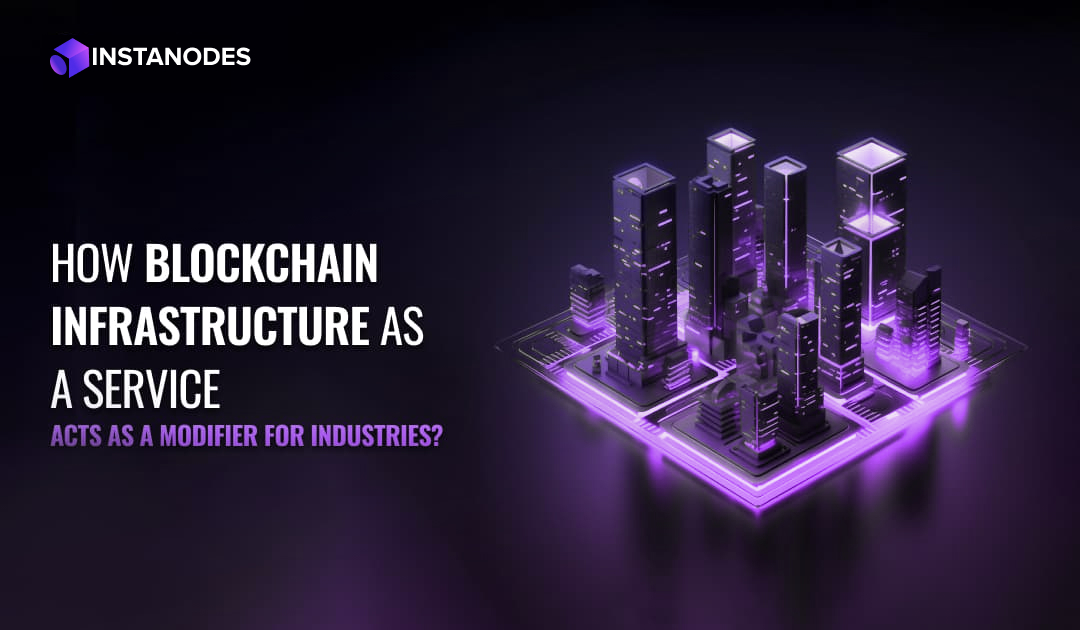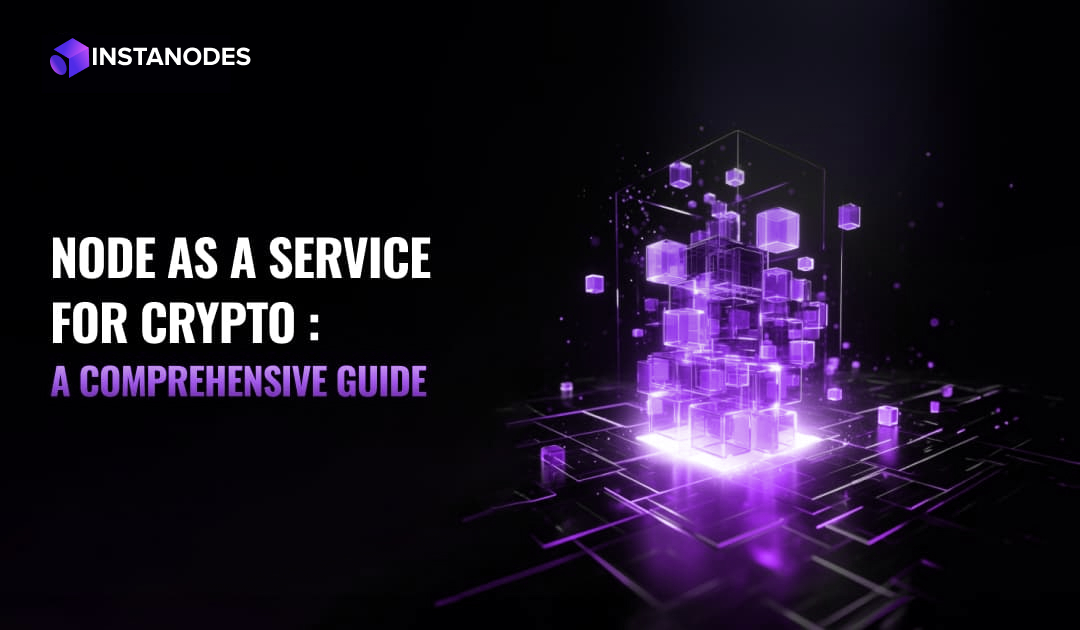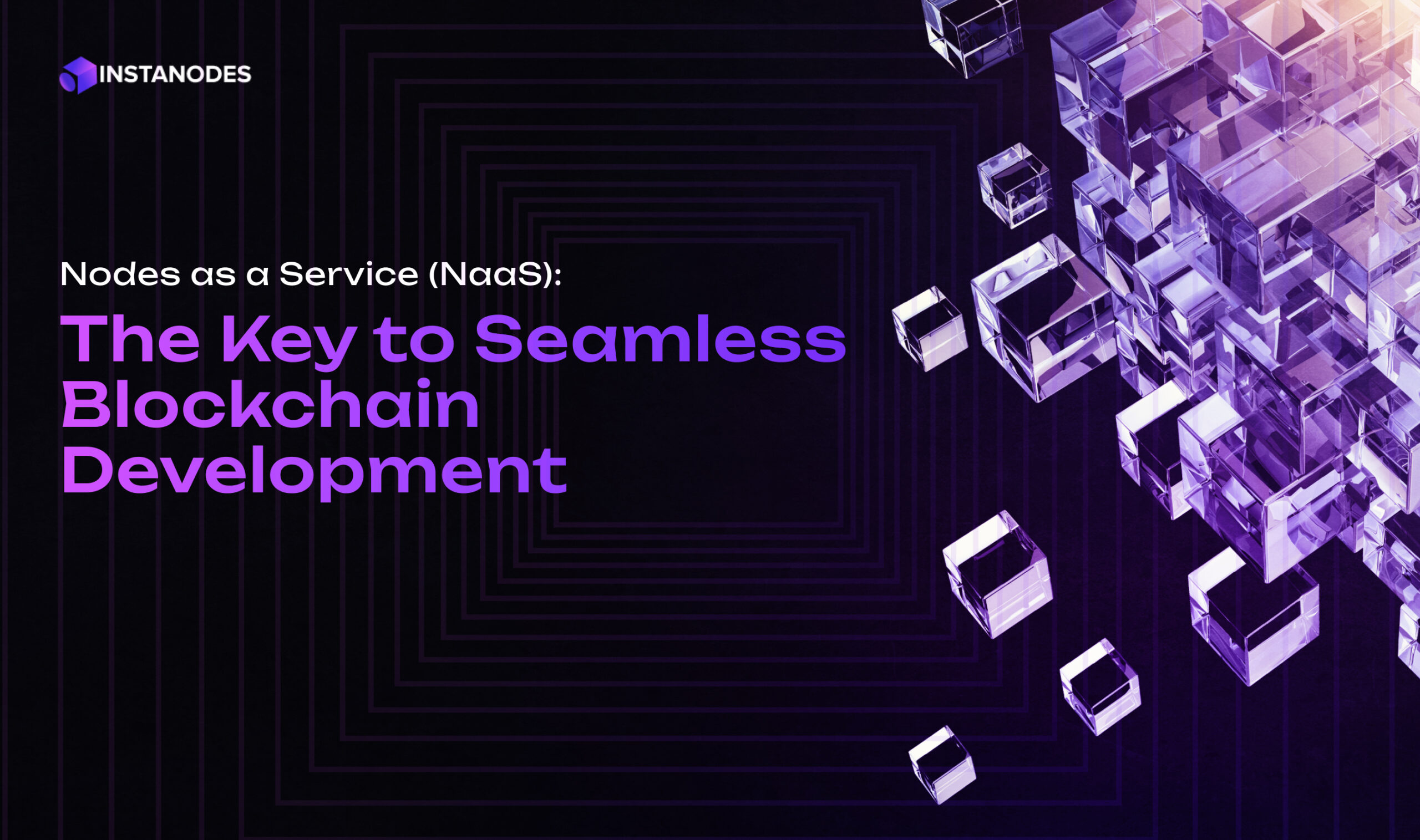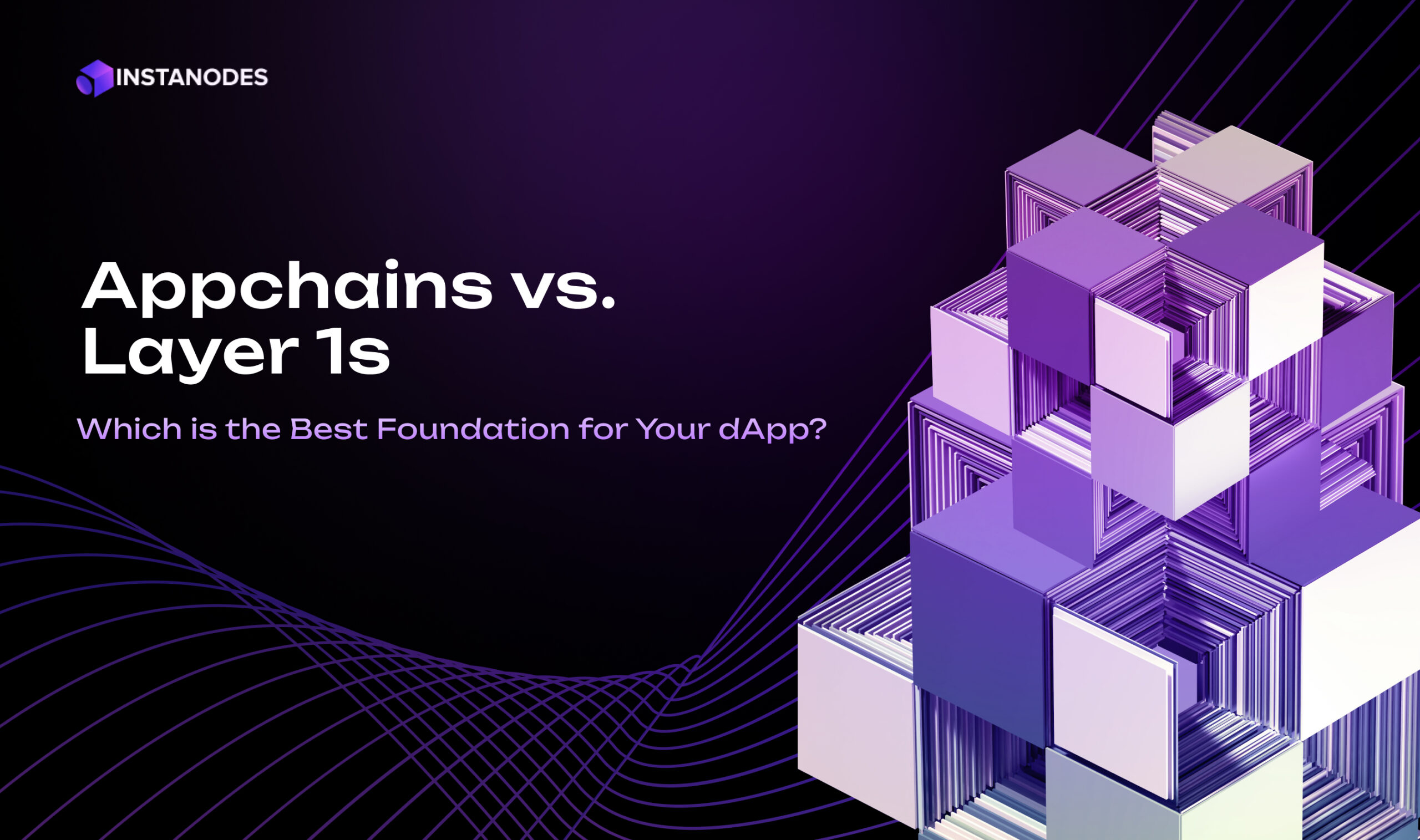Recall when hosting a blockchain node involved shelling out for pricey servers, experiencing perpetual sync problems, and hoping your connection did not go down in the middle of a crucial transaction? Those instances used to occur just a little while ago, not in ancient times. My friend in 2020 spent three weeks struggling to get his Ethereum node well-synced, only to have it fail him just before a big token launch he was attempting to join.
That’s precisely the reason Node as a Service providers have been game-changers. Rather than struggling with hardware and praying your internet connection is stable, developers can now create great apps without doubting the reliability of nodes. But the thing is every Node as a Service has a unique quality. Some offer the world and return mediocre performance, while others silently offer bulletproof infrastructure without a wide announcement.
The catch is determining which one actually suits your requirements. Do you require lightning-fast response times for a trading bot? DeFi protocol rock-solid uptime? Or perhaps just solid, affordable access for your side project on the weekend? Let’s explore what sets the winners apart from the also-rans in the node services niche.
Performance & Reliability Metrics: Measuring What Matters Most
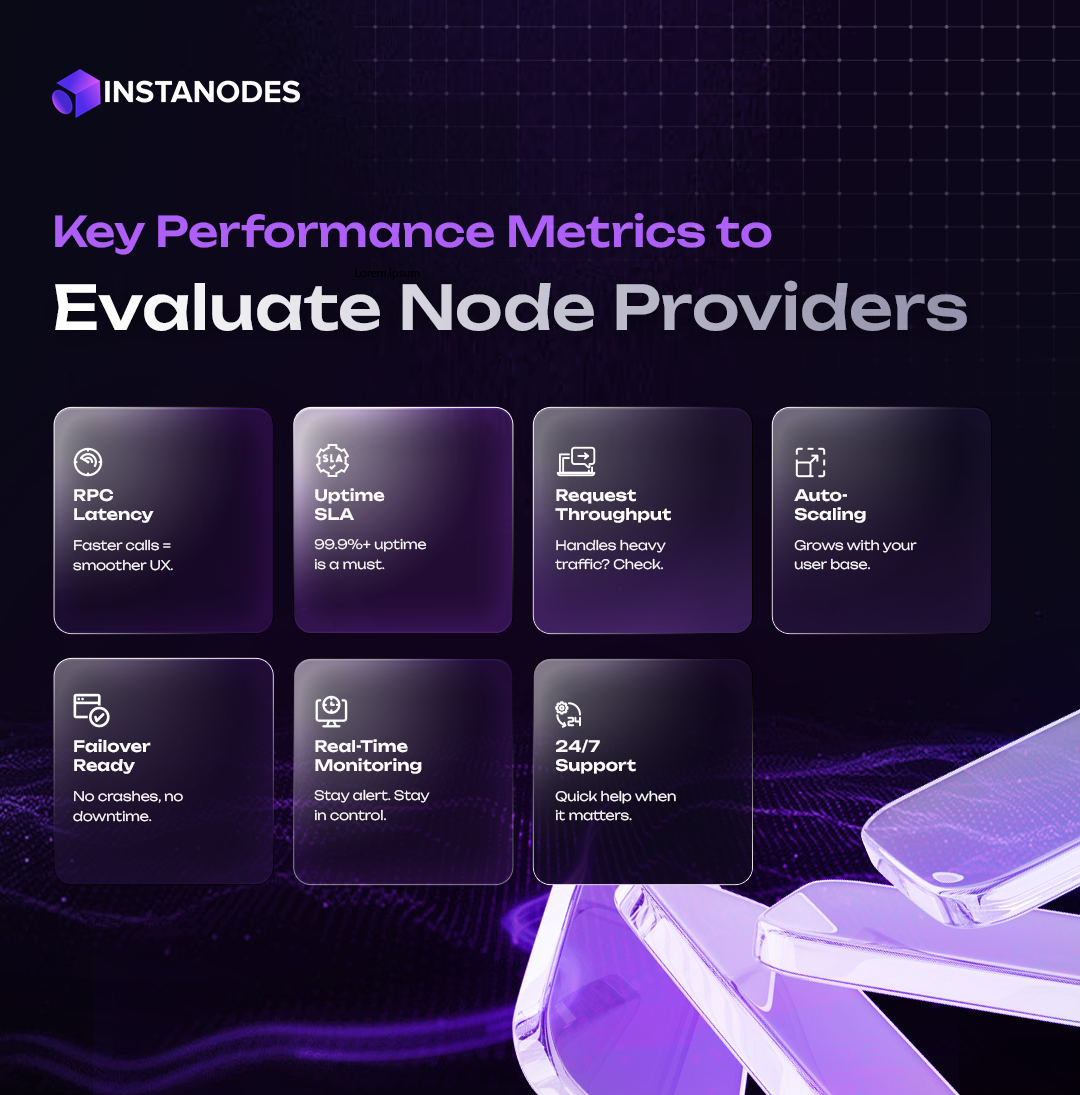
When considering node services, the glossy marketing statistics don’t always tell the entire story. Here’s what really affects your app’s success:
- Real uptime vs. guaranteed uptime
Monitor status pages and past performance, not SLA guarantees. A host that advertises 99.9% uptime but actually produces 99.5% means an additional 20 minutes of downtime per month.
- Response time consistency is more important than averages
An endpoint of 100ms average with spikes to 3 seconds will annoy users more than an endpoint providing 150ms responses consistently.
- Geographic reach and latency optimization
Asian users should not have to wait 500ms for replies from US-only infrastructure. Seek providers with strategically placed nodes.
- Rate limiting that makes sense
Rigid per-second caps can throttle legitimate traffic spikes. Better providers offer burst allowances and intelligent rate management.
- Transparent failover and redundancy
When nodes fail (and they will), traffic should automatically reroute without your application noticing. Manual failover isn’t acceptable in 2025.
- Network synchronization speed
How quickly does the Node as a Service provider catch up during blockchain reorganizations? Stale data can cost you money in fast-moving markets.
- Load testing capabilities
Can the provider handle your traffic during viral moments or market crashes? Ask for concrete capacity numbers, not vague assurances.
Top 5 Node as a Service Providers: Performance, Pricing, and Developer Support Compared
| Top Node Providers at a Glance | |||||
| Provider | Chains | RPC Speed | Uptime | Custom Deployments | Support |
| Instanodes | 50+ | Ultra-fast | 99.99% | Yes (Appchains, Rollups) | 24/7 Live Chat |
| Alchemy | 15+ | High | 99.95% | Limited | Email/Discord |
| Infura | 10+ | Moderate | 99.9% | No | Tickets Only |
| QuickNode | 25+ | Very Fast | 99.9% | No | Tickets/Discord |
| Ankr | 30+ | Fast | 99.95% | Limited | Community Support |
Here’s how the major players stack up when you look beyond the marketing materials:
1. Instanodes
Best for: Scaling fast with intuitive no-code deployment and global infrastructure.
- Uptime: 99.99% SLA-backed uptime
- Latency: Optimized for low-latency RPCs with geo-distributed nodes.
- Chains Supported: Major EVM and Non-EVM chains, along with rollups.
Highlights:
- Enterprise-class infrastructure with always rapid response times and 99.95% uptime SLA.
- Developer-centric strategy with upfront pricing and no hidden costs or unexpected fees.
- Extensive multi-chain support, such as Ethereum, Polygon, Arbitrum, Optimism, and Base.
- Advanced caching and load balancing for best performance during peak traffic.
- 24/7 dedicated support with actual engineers, not just tier-1 support staff.
- WebSocket connections are supported with automatic reconnection handling.
- Archive node access is included at no additional cost for historical data queries.
- Built-in DDoS protection and rate limiting that adapts to legitimate usage patterns.
- Competitive pricing that scales linearly without sudden tier jumps.
- Strong monitoring dashboard with real-time metrics and detailed analytics.
2. Alchemy
Best for: Builders who need great developer tools and analytics
- Uptime: ~99.95%
- Latency: Low-latency performance with dynamic throughput scaling.
- Chains Supported: Ethereum, Polygon, Arbitrum, Optimism, Solana, StarkNet.
Highlights
- Premium infrastructure with consistent sub-100ms response times across major networks.
- Enhanced APIs beyond standard JSON-RPC, including webhooks and advanced querying capabilities.
- Notify API for real-time transaction and address monitoring.
- Generous free tier (300M compute units monthly), but production costs can escalate to $500-2000+ monthly.
- Excellent documentation, debugging tools, and a composer for testing API calls.
- Archive data is available, but it can significantly increase the compute unit consumption.
- Strong presence in the NFT space with specialized endpoints and metadata handling.
- Mempool monitoring and transaction simulation features for advanced use cases.
- Best choice for teams prioritizing reliability and advanced features over cost considerations.
- Dashboard provides detailed usage analytic,s but can be complex to navigate.
3. Infura
Best for: Ethereum-first developers and enterprise-grade reliability.
- Uptime: 99.9% SLA
- Latency: Reliable but may spike during peak Ethereum congestion.
- Chains Supported: Ethereum, IPFS, Arbitrum, Optimism, StarkNet.
Highlights:
- Most established provider with a 7+ years track record and widespread MetaMask integration.
- Solid global infrastructure across the US, Europe, and Asia with consistent 99.9% uptime.
- Request-based pricing starting at $50/month for 100k requests, scaling to enterprise tiers.
- Strong network coverage, including Ethereum, Polygon, and layer-2 solutions.
- IPFS integration for decentralized storage alongside blockchain node access
- The feature set feels dated compared to newer competitors, but it has proven stability.
- Limited advanced APIs compared to Alchemy or QuickNode.
- Enterprise features include dedicated clusters and custom rate limits.
- Safe choice for teams wanting battle-tested infrastructure with minimal surprises.
- Customer support can be slow for non-enterprise accounts.
4. QuickNode
Best for: Fast launches and multi-chain support
- Uptime: 99.9%
- Latency: Fast, with distributed endpoints in major regions.
- Chains Supported: Ethereum, Solana, BNB Chain, Avalanche, Fantom, and many more.
Highlights:
- Consistently fastest response times in independent benchmarks (averaging 50-80ms globally).
- Global infrastructure with 13+ regions and automatic failover between endpoints.
- Marketplace of 20+ add-ons, including Trace API, Debug API, and NFT metadata.
- Competitive pricing starting at $9/month for 5M credits, scaling predictably.
- Transaction simulation and gas optimization tools for DeFi applications.
- Archive node access with full transaction history and state data.
- WebSocket support with connection persistence and automatic recovery.
- Detailed performance metrics and uptime monitoring in the dashboard.
- Limited free tier (1M credits monthly) compared to others.
- Ideal for performance-critical applications like MEV bots, arbitrage, and real-time trading.
5. Ankr
Best for: Cost-efficient access and decentralized RPC endpoints
- Uptime: 99.95%
- Latency: Moderate to high, depending on network load.
- Chains Supported: Ethereum, BNB, Polygon, Avalanche, and 20+ others.
Highlights
- Distributed network approach with 50+ global nodes offering better geographic coverage.
- Most competitive pricing with generous free tier (2M requests monthly) and $25/month paid plans.
- Multi-chain support across 15+ networks, including newer chains like Fantom and Avalanche.
- Public RPC endpoints are available for basic usage alongside premium services.
- Performance can vary (100-300ms) due to distributed infrastructure and node quality.
- Advanced APIs include token APIs, NFT APIs, and DeFi data aggregation.
- WebSocket connections are supported, but stability can be inconsistent.
- Community-driven governance and a decentralized approach appeal to Web3 purists.
- Enterprise solutions are available with dedicated nodes and custom SLAs.
- Excellent value for cost-conscious projects willing to trade some consistency for significant savings.
Finding The Right Node Services For Your Project
Choosing the right Node as a Service provider isn’t about finding the “best” one; it’s about finding the best match for your specific situation:
Early-stage projects and indie developers:
- Prioritize generous free tiers and clear, predictable pricing.
- Look for strong documentation and community support since you’ll be troubleshooting alone.
- Alchemy and Infura offer the most runway for development and initial growth.
- Don’t over-optimize for enterprise features you won’t use.
High-frequency trading and DeFi protocols:
- Performance directly translates to revenue; every millisecond matters.
- Consider dedicated infrastructure or premium tiers for guaranteed resources.
- QuickNode’s speed advantages can mean the difference between profitable and unprofitable arbitrage.
- Factor in the cost of downtime when evaluating pricing.
Consumer applications with global users:
- Geographic distribution significantly impacts user experience.
- Edge optimization becomes critical for engagement in international markets.
- Gaming and social applications especially benefit from low, consistent latency.
- Test performance from your actual user locations, not just your development environment.
Enterprise deployments:
- Custom SLAs, dedicated support, and private infrastructure become valuable.
- Compliance certifications and audit reports may be required.
- Negotiated pricing and service terms provide better cost control at scale.
- Integration with existing monitoring and alerting systems matters.
Multi-chain applications:
- Evaluate consistency across all networks you’ll support.
- Some providers excel on Ethereum but offer subpar service on newer chains.
- Consider future network additions and provider roadmaps.
- Unified billing and management across chains simplifies operations.
Security-focused projects:
- Request signing, IP whitelisting, and detailed access logs become important.
- Consider providers with additional compliance certifications.
- Private clusters may be worth the premium for sensitive applications .
- Evaluate data residency requirements for international compliance.
Conclusion
The blockchain infrastructure landscape has come such a long way from those early days of managing your own nodes. What used to require a dedicated DevOps team and constant vigilance now happens seamlessly through Node as a Service platforms. That doesn’t mean choosing between the top Node as a Service providers is a trivial matter; quite the opposite.
The node provider you select is the building block on which all the rest is based. Select the wrong node services, and you’ll waste months fiddling with angry users, unexplained downtime, and rising costs that cut into your bottom line. Select the correct one, and your infrastructure simply works, allowing you to get on with the good stuff like building features and expanding your user base.
What’s changed the game is how these providers have evolved beyond basic RPC access. Today’s leading Node as a Service providers offer everything from real-time webhooks to specialized DeFi APIs, turning what used to be a commodity service into a competitive advantage. The difference between a mediocre node service and a great one can literally make or break a project during those crucial early months.
The good news is that most of these providers offer generous free tiers, so you can actually test them with real traffic before committing. Don’t just read the spec sheets. Spin up a prototype and see how they perform with your specific use case. Attempt to simulate some load, test their failover mechanisms, and observe how quickly their support staff is to respond whenever you get stuck. Your future self will appreciate you doing the homework ahead of time rather than changing providers in the midst of a crisis.
Ready to forget about infrastructure and begin constructing the next blockbuster? Instanodes combines enterprise-grade reliability with developer-friendly pricing that actually makes sense. Get started today!
